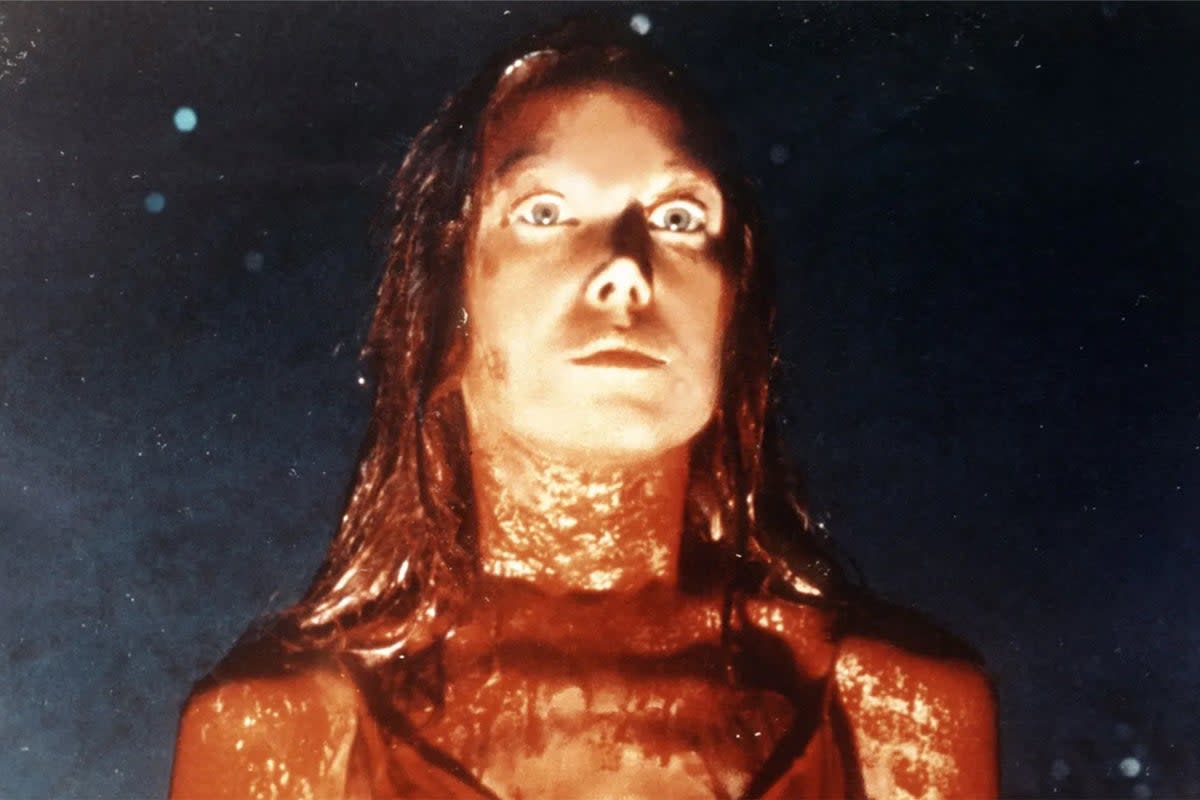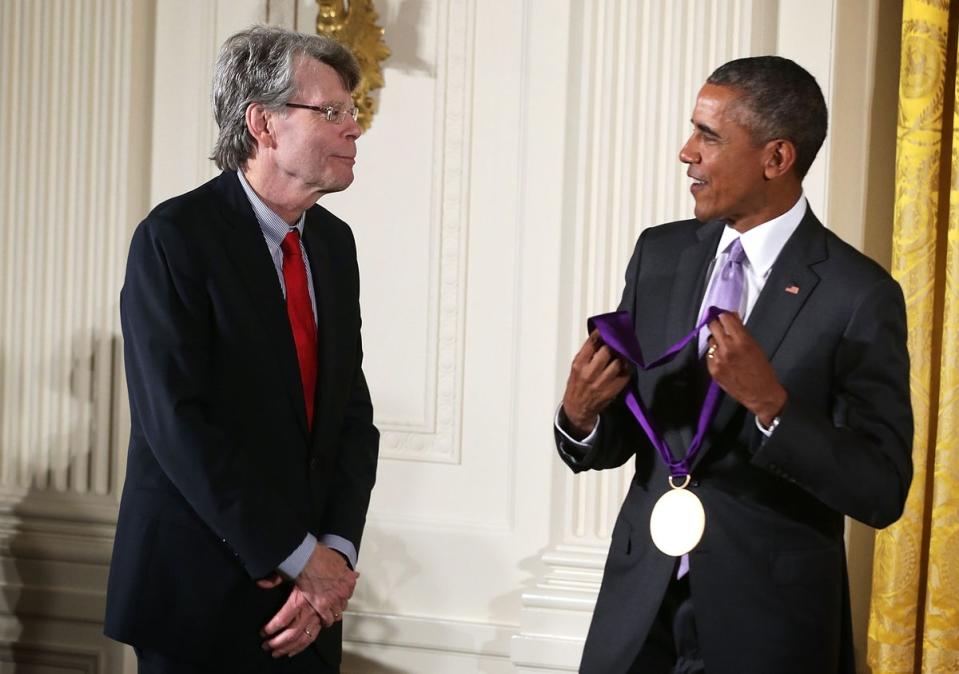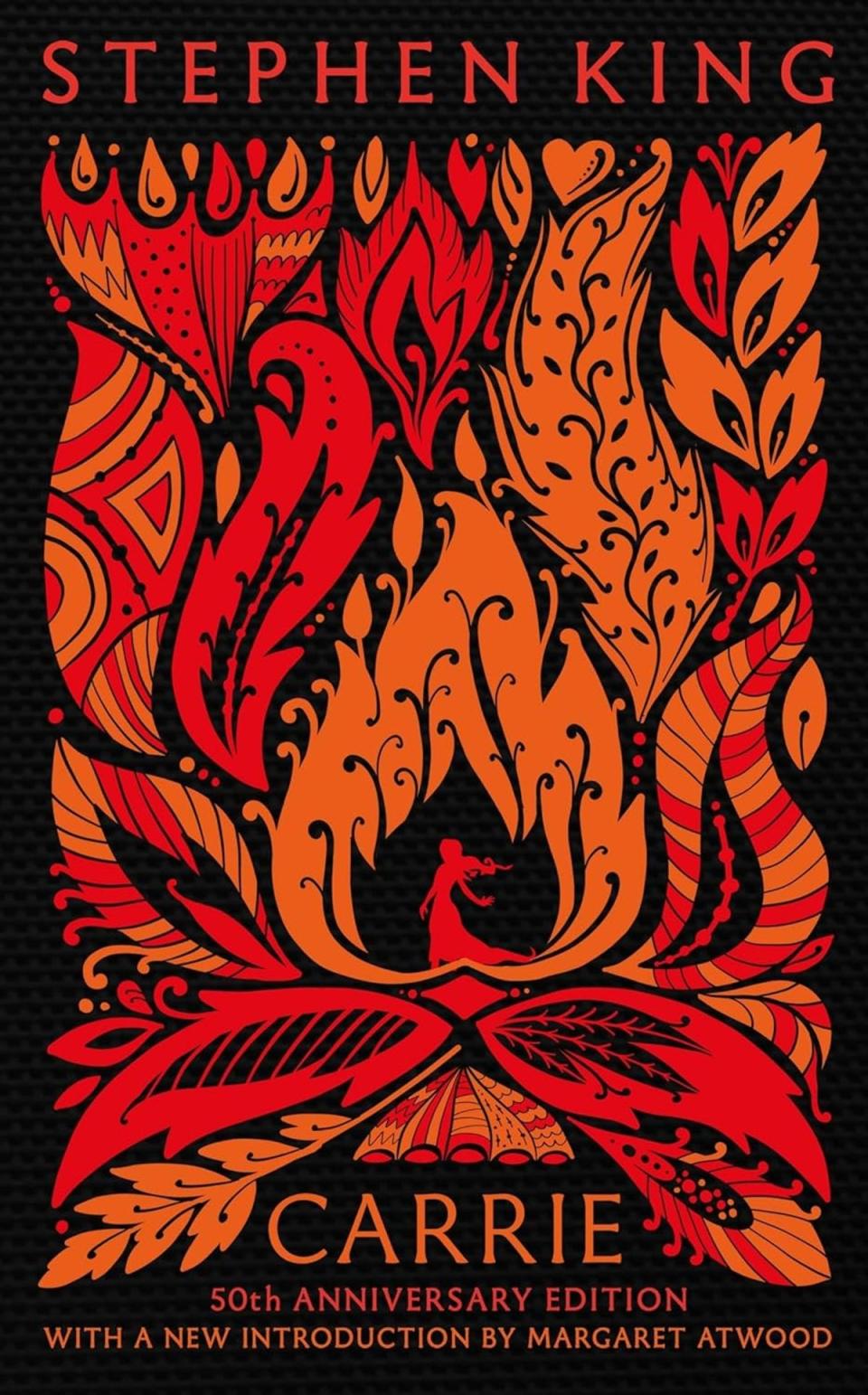Carrie at 50: the bloody history of Stephen King’s audacious debut novel

Unfortunately, I came of age during the “sexy Halloween” era. The annual festival of all things frightening was becoming gaudier, more candy-strewn and American. But it was the Noughties, so it was also enthusiastically promoting the idea of young women being “sexy” versions of scary things. The sexy witch. The sexy devil. The sexy black cat (?). The... sexy Freddy Krueger – yes, I’m afraid so. Personally, I found this a shame, because what I wanted to be was not sexy, but a girl covered in blood. A grand guignol prom queen who burnt down her school, then her whole town. I wanted to be Carrie White.
I never dressed up as Stephen King’s cult antihero, which was perhaps a good thing, at least in terms of practicalities – think of all the chairs I would have ruined. But despite this, and despite the fact that I’ve never had telekinetic powers, I felt something kindred with Carrie.
Published 50 years ago, on 5 April 1974, Carrie is the debut novel of the “king of horror”, the simple but twisted tale of a high-school girl who doesn’t fit in. The “frog among swans”, the “sacrificial goat”, his protagonist – the daughter of a bible-crazed single mother – is transformed into a beautiful prom queen, but it seems too good to be true. And so it is to prove when the main school bully recruits her deadbeat boyfriend to arrange for pig blood to fall onto the stage where Carrie is crowned, invoking in her a furious humiliation that brings about the novel’s deadly, destructive denouement.
How can it be that it was published 50 years ago? Even though it was written in an age before smartphones and social media, the specific teenage-girl pain of the novel feels fresh and stinging. My first experience of reading it – as a teen desperate to get “grown-up” books out of the library and munch them for plot – was very different; it wasn’t a particularly emotional experience. But as an adult, I found myself startled and moved.
I happened to be re-reading it on the same recent weekend that I returned to my old school for a concert. As I sat in the hall where I had once stumbled inelegantly through PE lessons and drama rehearsals, where I had shifted awkwardly in my seat during assemblies, the experience was visceral, heightened by Carrie. There lurked the ghosts of casual cruelty, taunts and teasing; you couldn’t pay me to do school again.
And although in some ways it’s jarring to read King’s descriptions of his telekinetic menace now – she looks around “bovinely”, she “grunts and gobbles”, she “looked like an ape” – they also resonate. As a teenage girl you find yourself in a body you don’t know how to drive yet; you feel like all your limbs are made of lead.
Carrie would be the book that changed everything for King. From The Shining to Misery, It to The Stand, he has since published more than 60 novels and sold more than 350 million books, plenty of which – including Carrie – have been the subject of multiple adaptations. But the fact that it almost didn’t happen is one of the most famous tales in literary lore: King initially put the manuscript for the novel in the bin, only for his wife Tabitha to fish it back out and urge him to continue.
He’d been working at a laundry when he remembered a summer job as a high-school janitor that required him to clean the girls’ changing room. He pictured an arresting scene: an awkward teenage girl, showering with no privacy, getting her first period and being pelted with tampons by her classmates. “She reacts... fights back... but how?” he wrote in his memoir, On Writing. For the character of Carrie, he was inspired by two girls he’d known at school – both misfits, both of whom had died young.

The manuscript sold when he was 26 and a young parent. He was working as a high-school teacher, a career King expected to continue while writing on the side. That is, until his publishers rang him to tell him that the paperback rights had sold for $400,000 (£317,000). “The strength ran out of my legs. I didn’t fall, exactly, but I kind of whooshed down to a sitting position there in the doorway,” he recalled in On Writing. It wasn’t just a way into full-time writing, but a way out of a life of never quite having enough money. Dazed, King decided to go out and buy his wife a “wild and extravagant” Mother’s Day present (the best he could find, he said, was a hairdryer).
Carrie reads like a book written without fear, the calling card of a writer with immense storytelling power. At just 272 pages, it’s a predecessor to King’s breezeblock era, and very much a novel of mood and image. King sets an atmosphere of claustrophobic, encroaching terror, and then ticks up the tension until the spectacular finale. But it also marked the birth of a more bold, modern type of horror. Here, terrors lurked among everyday banalities, from douchey frat boys to overbearing parents.
Upon publication, Carrie was by no means an overnight success. Hardback sales were slow. The paperback gathered pace, though, selling a million in its first year. And reviews were strong, too. The New York Times found King’s talent prodigious. “That this is a first novel is amazing. King writes with the kind of surety normally associated only with veteran writers,” said the review. “This mixture of science fiction, the occult, secondary school sociology, kids good and bad and genetics turns out to be an extraordinary mixture.”
Reading it today, I was also struck by the novel’s conscience. This is a story about a world in which men hate women – Billy Nolan, the co-architect of Carrie’s humiliation, sees girlfriend Chris Hargensen as a disposable sexual object – and where femininity is feared. No wonder Margaret Atwood is a fan. In her introduction to a new edition being published for the 50th anniversary, she writes: “underneath the ‘horror,’ in King, is always the real horror: the all-too-actual poverty and neglect and hunger and abuse that exists in America today”.
This is a story about a world in which men hate women and femininity is feared. No wonder Margaret Atwood is a fan
One of my favourite things about the novel is its unusual scrapbook effect. Interspersing the story with snippets and clippings from fictionalised articles about the “Carrie phenomenon”, King creates a sense of foreboding, teasing the voyeur within all of us that wants to know more about the horrible thing that happened.
King added these elements, he says, for two reasons: to pad out his too-short novel, and “to inject a greater sense of realism” – he was emulating the “Did this really happen?” effect of Orson Welles’s radio broadcast of The War of the Worlds. One entry takes the form of the biography of Sue Snell, who sends her boyfriend Tommy to the prom with Carrie, and says, “They finally even made a movie about it. I saw it last April. When I came out, I was sick.” Violence in the suburbs, shortly followed by a film version? A mischievous touch of verisimilitude.
Of course, they did make a movie of Carrie – and Brian De Palma’s cult 1976 film loses these snippets, which don’t translate to film. King thought the film was more stylish than the novel. In his book about the horror genre, Danse Macabre, he described its epic final scenes, where an eyes-bulging, bloodied Sissy Spacek glides through the school gym to a backdrop of dancing flames, as “a dream revolution of the socially downtrodden”.
The film was a huge box-office success, and frequently appears on lofty lists of great movies. Watching it today is nonetheless an alarming experience: the soft-focus male-gazey haze of the opening shower scene, where beautiful naked young women soap themselves, feels icky. But the performances, from John Travolta as the dick-for-brains Billy to Spacek’s monumental, Oscar-nominated summoning of Carrie, are timeless.
De Palma’s film has genuinely earned the overused adjective “iconic”; less successful was a 2013 remake with Chloe Grace Moretz and Julianne Moore, which has a 50 per cent rating on Rotten Tomatoes. But, on the scale of disasters, that came nowhere near Carrie: The Musical, something that practically has eighth-wonder-of-the-world status when it comes to flops.

Developed by the Royal Shakespeare Company in 1988, the musical seemed to be a misfire from the start: star Barbara Cook, playing Carrie’s mother, left the production after nearly being decapitated by part of the set. On Broadway, it was slaughtered – “uninhibited tastelessness” was The New York Times’s verdict – and became one of the most expensive flops in history, losing $8m and closing after only 21 performances.
In his book Not Since Carrie: Forty Years of Broadway Musical Flops, Ken Mandelbaum described the show as something to which “all future musical flops will be compared and found wanting”. Since then it has been revived as a cult hit, including a 2015 run at Southwark Playhouse – but with a number of the songs excised. Gone, now, was “Out for Blood”, a song-and-dance number about killing pigs that had left the audience not knowing where to look. So notorious was the song that a recent 10-part podcast was named after it.
There have been debates during King’s 50-year career as to whether he qualifies as a great writer. Is it “art”? Anything that sells in the kind of numbers he does will always arouse suspicion. Carrie, at least to me, is a great work: haunting, hard to stop reading, close to the bone. And still exhilarating, half a century later.
It’s difficult to revisit it now without the extraordinary knowledge of what King went on to become: one of our most prolific and reliable storytellers. I wish I’d been able to read it 50 years ago, not knowing about any of that – just electrified by the arrival of a debut writer with a voice that made you sit up, who seemed like he had a pretty vivid imagination. What might he go on to do? Who knew.
A 50th anniversary edition of ‘Carrie’, with a new introduction by Margaret Atwood, is out now, published by Hodder & Stoughton


